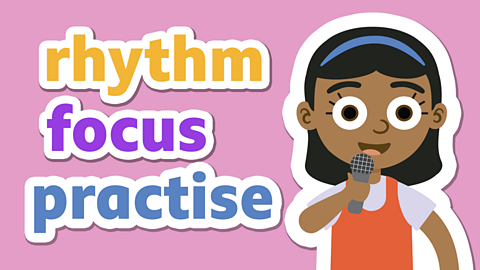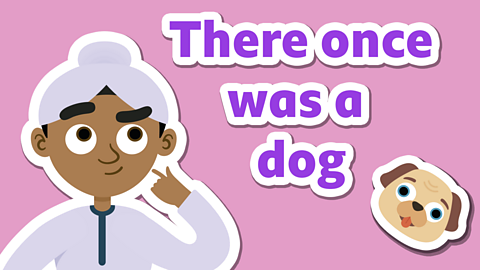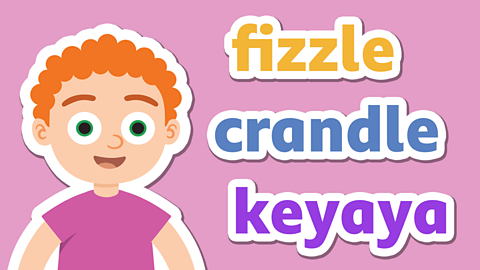Watch: Key features of a poem

Poetry is fantastic! It is a type of writing that is designed to bring out feelings (emotions) in the reader or the person who is listening to it being read aloud.
There are lots of different types of poem. Some have strict rules, such as limericks or haikus. On the other hand, some have less rules, such as free verse or narrative poems.
Watch this video to learn about the key features of various types of poem.

Learn how to get your ideas from your head and into your poem.
How to write poetry.
Poetry is a form of writing designed to evoke emotions as you read aloud or to yourself. That sounds very complicated.
Where do you start with that? How about subject?
All poems need to be about something. Take Robert Burns. He wrote about all sorts. To A Mouse is about, well, a mouse. Address To A Haggis is about, you guessed it, a haggis.
So you can write poetry about anything you like. What's important in poetry is the language you use to describe your subject.
To create vivid descriptions of what you're writing about, you can use similes, comparing things using like and as.
Jackie Kay uses similes in her poem, Bushfire.
'That fire they said was red, as red, as red, as red as a fox, your lips, a cherry.'
William Wordsworth also used similes skilfully to create imagery in the head of the reader.
'I wandered lonely as a cloud that floats on high o'er vales and hills.'
Mr Wordsworth also used metaphors, comparing two things which aren't alike, but have something in common.
'When all at once I saw a crowd, a host of golden daffodils.'
He also used personification, which is describing an object as if it were alive.
'Beside the lake, beneath the trees, fluttering and dancing in the breeze.'
You've got a subject. You've got some great images. Now, you need to fit this into your poem and there are lots of different structures to use with their own rhyme, rhythm shape and length.
If you want something short, you could try a traditional Japanese haiku. Just three lines long, five syllables, then seven, then five, like this:
'An old silent pondA frog jumps into the pondSplash. Silence again.'
It may seem like poems have lots of rule, but they don't have to.
Free verse is poetry that does not rhyme or have a regular rhythm.
'Bacon sizzling on Sunday mornings.Hot buttered toast.Crunch, crunch, crunch.'
It lets you do anything you want with the words, the length, the structure, even the punctuation.
The important thing to remember is that anyone can write poetry.
You can write poetry about whatever you feel like, in whatever way you want, for whatever reason you choose.
Why not try a limerick? Five lines long. Something like this.
'There was a young boy from Peruwith something in important to doso he found a quiet placeto get some head spaceand wrote poetry while on the…'
Nah, okay, maybe not then.
Features of a poem

Subject
All poems have a subject – the thing that the poem is about. Poets can write about anything.
For example, Robert Burns wrote about mice and even haggis!
Language
Descriptive language that creates imagery (a picture in the mind of the reader) is important in poetry. Poems often include descriptive devices like:
- Similes describe something by comparing it to something else, using like or as.
For example, the daffodils twirled like ballerinas.
- Metaphors are a word or a phrase used to describe something as if it were something else.
For example, George had a lion’s heart (meaning he was brave).
- Personification describes objects as if they are people.
For example, the daffodils were fluttering and dancing in the breeze.

Watch: Different types of poetry
Learn how to recognise different poetry forms.

A haiku is a very short poem that has some very specific rules.
- It is three lines long.
- The first and last lines have five syllables.
- The middle line has seven syllables.
A sonnet is a much longer poem but also has rules.
- It has 14 lines
- It is split into four verses
- The first three verses have four lines.
- The fourth verse has two lines.
- It uses rhyme.
A poem with no verse has no rules whatsoever. It does not follow a structure and it’s up to the poet to decide how many lines they want, if they want verses and if they want it to rhyme.

Activity 1
Can you answer the questions in this poetry quiz?
Activity 2
Activity 3

Watch the Joseph Coelho video again from 00.42 to 02.48.
Then think about which poem you like best and why you like it better - the haiku or the sonnet.
Then look at the questions below and write your answers down on paper.
1. What do you like about each poem?
2. Do you dislike anything about each poem?
3. Which do you like better? Why?
People can have different opinions on poetry. What you think about a poem might be very different to what somebody else thinks.
If you can, share your answers with a friend or someone at home and see if they think the same as you or have a different opinion.


Top tip!
You could complete the sentences below to help you.
1. In the haiku poem I like …
In the sonnet poem I like …
2. In the haiku poem I dislike …
In the sonnet poem I dislike …
3. I like the haiku /sonnet poem better because…

Activity 4

It’s time to get creative! You are going to write your very own haiku poem.
Remember the rules for a haiku poem:
- It is three lines long.
- The first and last lines have five syllables.
- The middle line has seven syllables.

Top tip!
If you can’t remember what a syllable is, re-watch the video at 00.10 to 00.40 to hear how Joseph explains them.
Your haiku can be about anything but as Joseph said in the video, they are often about the seasons – summer, spring, winter and autumn like his tree haiku. But he also came up with one about football which features in the video at 01.44 to 01.50.
Once you’ve written your haiku you could perform it for someone at home, or film yourself reading it with an adult’s help to show to your friends or teacher.
Play our fun English game Crystal Explorers. gamePlay our fun English game Crystal Explorers
Use grammar, punctuation and spelling skills to explore jungles, caves and tombs on your mission!

More on Poems
Find out more by working through a topic
- count12 of 13

- count13 of 13

- count1 of 13

- count2 of 13
